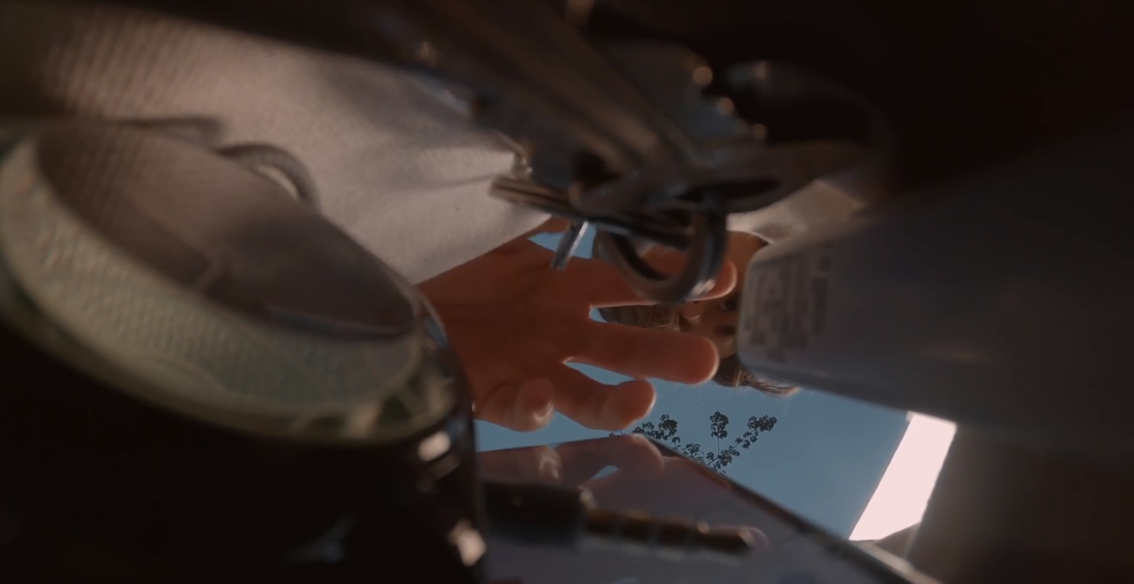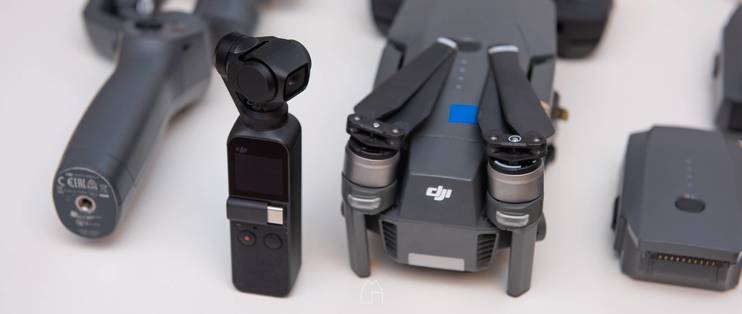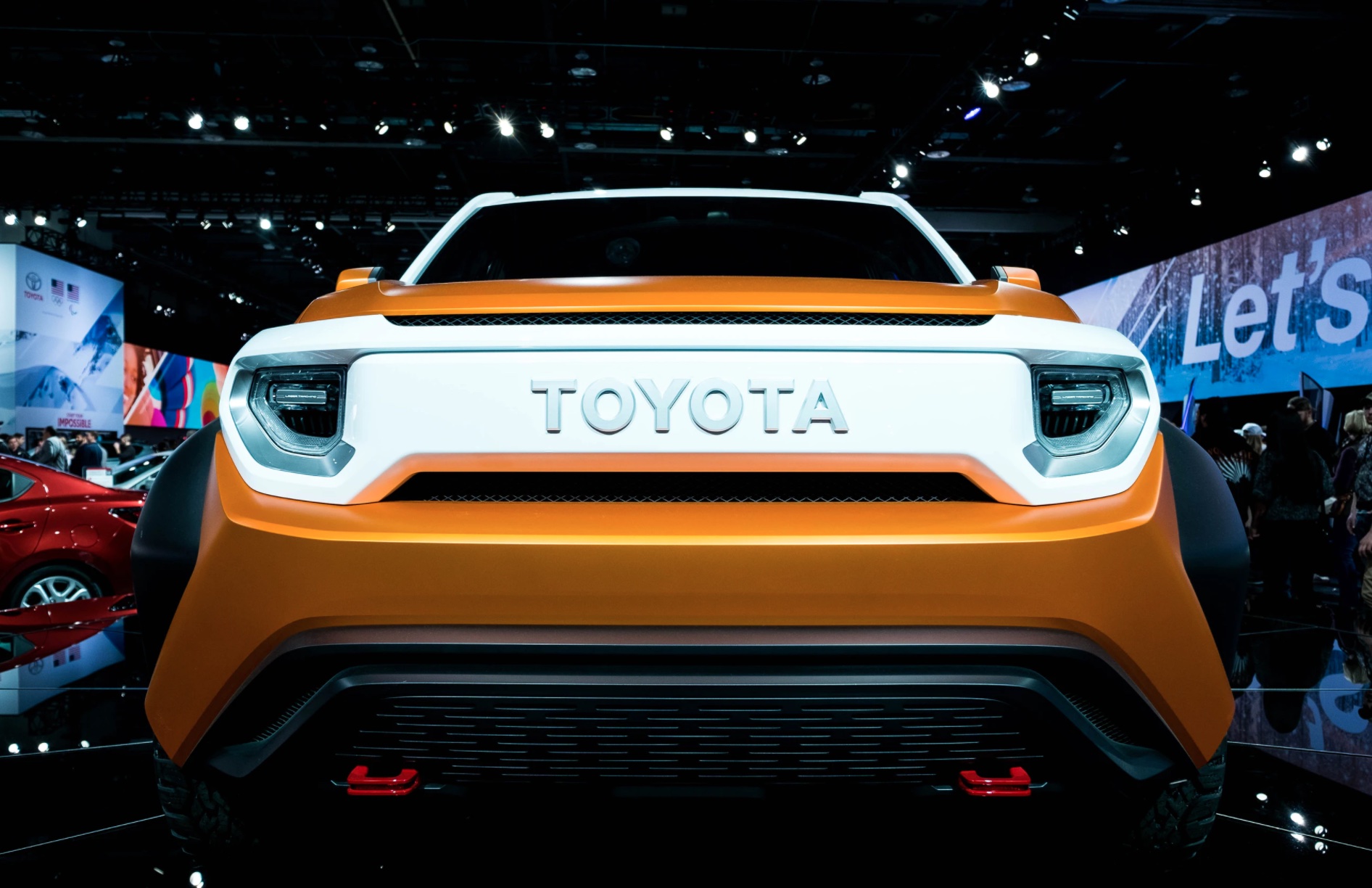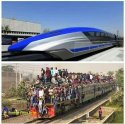You are using an out of date browser. It may not display this or other websites correctly.
You should upgrade or use an alternative browser.
You should upgrade or use an alternative browser.
News on China's scientific and technological development.
- Thread starter Quickie
- Start date
Hi MTd2,But this is actually good, because it is much easier for China to come up with something good to offer ASML than to achieve self reliance, which is pretty much aimed right now. In any case, even USA is not capable of self reliance, much less Japan, not Taiwan. By doing so, it can undermine USA power by isolating it from Europe and others.
But it takes longer for it to come to fruition and when it does, it always a generation behind, its an exhausting and expensive race. The US advantage is she can use and harness other nation brain power and talent thru cooperation or intimidation. China doesn't have that luxury and had to develop it all herself.
from cnTechPost
DJI to launch new product on Oct 20, possibly Pocket 2 camera
2020-10-18 18:46:00 GMT+8 | cnTechPost
0

Chinese drone maker DJI posted a preview video on on October 16, stating that the company will be releasing a new product on October 20 at 21:00 pm.
Although DJI did not reveal which specific product line this new product belongs to, the text of the preview "This time, what is DJI going to pull out of its pocket?" The new product, judging by the video, could be DJI's next-generation pocket camera, the Pocket 2.

Not long ago on October 13, the Federal Communications Commission (FCC) made public a document filed by a DJI subsidiary, with product names DJI Pocket 2 Do-It-All Handle and DJI Wireless Microphone Transmitter, respectively.
The first DJI Pocket was introduced at the end of 2018, and after two years, it's time for DJI to introduce a new generation of products.

The Pocket is DJI's smallest 3-axis mechanical stabilization gimbal camera to date. Lightweight, portable, smart and equipped with a separate screen, easily shooting and documenting life has never been easier or more fun.
Launched in 2018, the original Pocket is DJI's smallest 3-axis gimbal camera to date. The device is equipped with a 12-megapixel camera, complemented by a large F/2.0 aperture and 80° wide-angle lens, and supports 4K/60fps ultra-high-definition video recording.

DJI to launch new product on Oct 20, possibly Pocket 2 camera
2020-10-18 18:46:00 GMT+8 | cnTechPost
0

Chinese drone maker DJI posted a preview video on on October 16, stating that the company will be releasing a new product on October 20 at 21:00 pm.
Although DJI did not reveal which specific product line this new product belongs to, the text of the preview "This time, what is DJI going to pull out of its pocket?" The new product, judging by the video, could be DJI's next-generation pocket camera, the Pocket 2.

Not long ago on October 13, the Federal Communications Commission (FCC) made public a document filed by a DJI subsidiary, with product names DJI Pocket 2 Do-It-All Handle and DJI Wireless Microphone Transmitter, respectively.
The first DJI Pocket was introduced at the end of 2018, and after two years, it's time for DJI to introduce a new generation of products.

The Pocket is DJI's smallest 3-axis mechanical stabilization gimbal camera to date. Lightweight, portable, smart and equipped with a separate screen, easily shooting and documenting life has never been easier or more fun.
Launched in 2018, the original Pocket is DJI's smallest 3-axis gimbal camera to date. The device is equipped with a 12-megapixel camera, complemented by a large F/2.0 aperture and 80° wide-angle lens, and supports 4K/60fps ultra-high-definition video recording.

The attractiveness of the China market, Toyota need to scale up its hybrid tech to stay relevant, or be overtaken by Chinese EV cars and Tesla. Here you can see the trade off and Chinese gov't support, no wonder the QUAD meeting statement happen not without a bang but a whimper
from cnTechPost
Toyota reportedly to offer hybrid technology to Chinese automakers
2020-10-18 20:37:28 GMT+8 | cnTechPost
0

(Photo from )
Toyota has decided to supply the core system of its hybrid vehicle to major Chinese automaker Guangzhou Automobile Group (GAC), the first time in Toyota's history that it will offer hybrid vehicle technology to a foreign company, according to on Thursday.
The hybrid technology will be provided to Guangzhou Automobile, a joint venture partner in China, by BluE Nexus, a company jointly owned by Toyota, Denso, and Aisin Seiki, the report said.
BluE Nexus, which develops and supplies drive systems for hybrid vehicles, has reached an agreement with Guangzhou Automobile on the technology transfer. The Japanese company is also believed to have agreed to offer the technology to Geely, a privately owned Chinese automaker, according to Nikkei.
The move follows a decision by China to include hybrid vehicles in the eco-friendly vehicle category under new emissions standards starting next year. At present, hybrid vehicles are treated in the same way as gasoline-powered ones. Japanese companies, including Toyota, hope to take advantage of the new rules to expand sales in China, the report said.
Under the new emissions rules, hybrid vehicles will count as low-emission vehicles, making it easier for Japanese companies, which excel in hybrid technology, to meet China's tight emissions requirements. The rule change has also prompted Chinese automakers to adopt hybrid technology more broadly.
In an effort to expand the market for hybrid cars in China, Toyota has offered specific patented technologies free of charge since the spring of 2019. But that did not lead to a major shift to hybrid models, due in part to the difficulty of making them locally. This prompted calls for Toyota to make the entire hybrid system available to other manufacturers.
Toyota's market share in China remains around 6%, even after it sold a record 1.62 million vehicles last year. It sought to lift sales with the release of an electric vehicle this year but sold fewer than 2,000 in the first eight months.
The move is the latest by the Japanese carmaker to try to expand in China.
In March, Reuters reported that Toyota and its partner FAW Group plan to build a new electric vehicle plant in Tianjin with a planned investment of about 8.5 billion yuan (about $1.22 billion).
Documents showed that the plant will have a manufacturing capacity of 200,000 new energy vehicles each year. In China, new energy vehicles include pure electric vehicles, hybrid vehicles and fuel cell vehicles.
Toyota declined to comment on the project but said in a statement that it views China as one of its most important global markets and is constantly considering implementing various measures in China to meet the needs of developing business in China.
In June, Toyota announced that in order to popularize hydrogen fuel cell vehicles (FCEVs) in China, it has joined forces with five Chinese companies to establish a commercial vehicle a fuel cell system development company.
The five Chinese companies are China FAW, Dongfeng Motor Group, Guangzhou Automobile Group Co. Ltd., Beijing Automotive Group Co. Ltd. and Beijing Sino Hytec.
The new company is called United Fuel Cell System Research and Development (Beijing) Co. Jointly funded by the companies, it is expected to be formally established in Beijing within 2020.
from cnTechPost
Toyota reportedly to offer hybrid technology to Chinese automakers
2020-10-18 20:37:28 GMT+8 | cnTechPost
0

(Photo from )
Toyota has decided to supply the core system of its hybrid vehicle to major Chinese automaker Guangzhou Automobile Group (GAC), the first time in Toyota's history that it will offer hybrid vehicle technology to a foreign company, according to on Thursday.
The hybrid technology will be provided to Guangzhou Automobile, a joint venture partner in China, by BluE Nexus, a company jointly owned by Toyota, Denso, and Aisin Seiki, the report said.
BluE Nexus, which develops and supplies drive systems for hybrid vehicles, has reached an agreement with Guangzhou Automobile on the technology transfer. The Japanese company is also believed to have agreed to offer the technology to Geely, a privately owned Chinese automaker, according to Nikkei.
The move follows a decision by China to include hybrid vehicles in the eco-friendly vehicle category under new emissions standards starting next year. At present, hybrid vehicles are treated in the same way as gasoline-powered ones. Japanese companies, including Toyota, hope to take advantage of the new rules to expand sales in China, the report said.
Under the new emissions rules, hybrid vehicles will count as low-emission vehicles, making it easier for Japanese companies, which excel in hybrid technology, to meet China's tight emissions requirements. The rule change has also prompted Chinese automakers to adopt hybrid technology more broadly.
In an effort to expand the market for hybrid cars in China, Toyota has offered specific patented technologies free of charge since the spring of 2019. But that did not lead to a major shift to hybrid models, due in part to the difficulty of making them locally. This prompted calls for Toyota to make the entire hybrid system available to other manufacturers.
Toyota's market share in China remains around 6%, even after it sold a record 1.62 million vehicles last year. It sought to lift sales with the release of an electric vehicle this year but sold fewer than 2,000 in the first eight months.
The move is the latest by the Japanese carmaker to try to expand in China.
In March, Reuters reported that Toyota and its partner FAW Group plan to build a new electric vehicle plant in Tianjin with a planned investment of about 8.5 billion yuan (about $1.22 billion).
Documents showed that the plant will have a manufacturing capacity of 200,000 new energy vehicles each year. In China, new energy vehicles include pure electric vehicles, hybrid vehicles and fuel cell vehicles.
Toyota declined to comment on the project but said in a statement that it views China as one of its most important global markets and is constantly considering implementing various measures in China to meet the needs of developing business in China.
In June, Toyota announced that in order to popularize hydrogen fuel cell vehicles (FCEVs) in China, it has joined forces with five Chinese companies to establish a commercial vehicle a fuel cell system development company.
The five Chinese companies are China FAW, Dongfeng Motor Group, Guangzhou Automobile Group Co. Ltd., Beijing Automotive Group Co. Ltd. and Beijing Sino Hytec.
The new company is called United Fuel Cell System Research and Development (Beijing) Co. Jointly funded by the companies, it is expected to be formally established in Beijing within 2020.
...
Toyota reportedly to offer hybrid technology to Chinese automakers
...
In an effort to expand the market for hybrid cars in China, Toyota has offered specific patented technologies free of charge since the spring of 2019. But that did not lead to a major shift to hybrid models, due in part to the difficulty of making them locally. This prompted calls for Toyota to make the entire hybrid system available to other manufacturers.
Toyota's market share in China remains around 6%, even after it sold a record 1.62 million vehicles last year. It sought to lift sales with the release of an electric vehicle this year but sold fewer than 2,000 in the first eight months.
The move is the latest by the Japanese carmaker to try to expand in China.
In March, Reuters reported that Toyota and its partner FAW Group plan to build a new electric vehicle plant in Tianjin with a planned investment of about 8.5 billion yuan (about $1.22 billion).
Documents showed that the plant will have a manufacturing capacity of 200,000 new energy vehicles each year. In China, new energy vehicles include pure electric vehicles, hybrid vehicles and fuel cell vehicles.
Toyota declined to comment on the project but said in a statement that it views China as one of its most important global markets and is constantly considering implementing various measures in China to meet the needs of developing business in China.
In June, Toyota announced that in order to popularize hydrogen fuel cell vehicles (FCEVs) in China, it has joined forces with five Chinese companies to establish a commercial vehicle a fuel cell system development company.
The five Chinese companies are China FAW, Dongfeng Motor Group, Guangzhou Automobile Group Co. Ltd., Beijing Automotive Group Co. Ltd. and Beijing Sino Hytec.
The new company is called United Fuel Cell System Research and Development (Beijing) Co. Jointly funded by the companies, it is expected to be formally established in Beijing within 2020.
Hybrids are bit of a bust. Expensive to manufacture and offer minimal fuel savings. It is in inner city traffic where they are most viable but electrics are even better in such driving regimes. Electrics are way easier to manufacture. Much less parts and no need to rely on petroleum imports. Plug-in hybrids do have a niche market in that electric vehicles are a PITA on longer distance travel and in short range trips you can go electric. But like I said still a lot more expensive to manufacture. You basically need two power trains in the same vehicle.
Hydrogen fuel cell vehicles are a waste of time. Hydrogen is terrible as a fuel. It is expensive as heck to manufacture and the cheapest way to manufacture it is polluting as well. You basically crack the hydrogen from natural gas (CH4) into CO2 and 2xH2. The hydrogen itself is low density so you either need to compress it or liquefy it. Doing either wastes even more energy. Some promote "green hydrogen" by cracking water with electrolysis i.e. you crack water (H2O) into 2xH2 and O2. But electrolysis is 50% efficient. You would have been better off storing the original electricity directly into electric batteries and not waste energy. The fuel cells themselves are expensive like heck requiring platinum group metals typically. It makes no sense.
Toyota seems to be brain damaged and dead set against electric vehicles for some sort of reason. Because traditional automakers didn't bet on electrics when they should have this left the field wide open for companies like Tesla to exploit with great success and companies like Toyota still haven't learned. Heck Tesla uses Panasonic batteries. China shouldn't waste money on such technologies like hybrid or fuel cells vehicles. They are a waste of time. Once solid batteries come out into use (more stable than traditional Li-ion, more energy density, faster charging times) I think all these technologies and conventional combustion vehicles will be dead.
Where I think fuel cells might have uses is not the hydrogen fuel cells but the ones which use natural gas. Namely SOFC fuel cells. But those use brittle ceramics so they are mostly used for stationary applications not vehicles.
Last edited:
400km/h and can adapt to different rail gauges and power systems
Noticed this achievement is mention very little if any in any of the western MSM. China have the longest HSR in the world, it is longer than the whole world combined. Nothing is mentioned, but as soon as one accident happened like last time under premier Wen. The western MSM was all over it like a bad rash. Blaming the government rather than individual or the operator like they normally do if it's their industry.
Anyway let's rejoice on China's achievement. I just love the comparison below.

The poster above comes with caption that says China maybe the top for speed. But India beats China to the top slot in passenger utilisation rate! Lol
